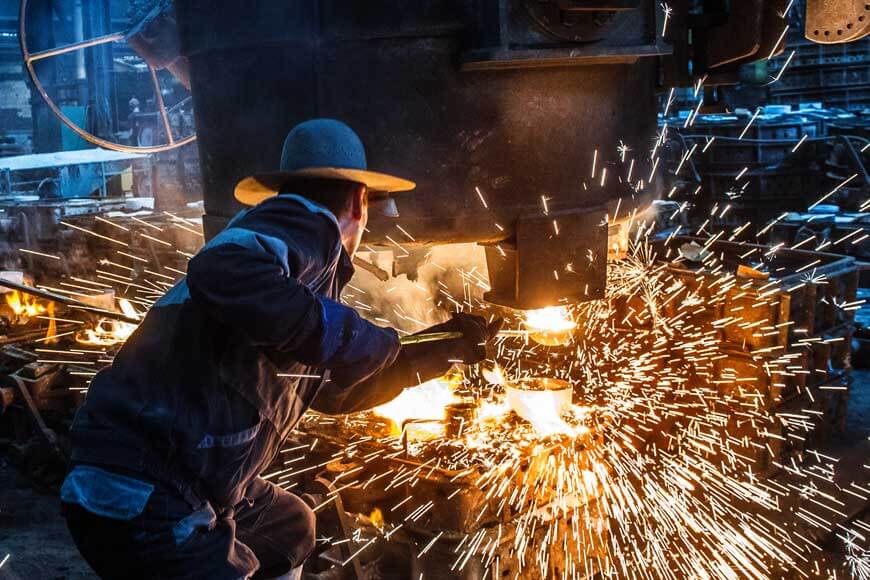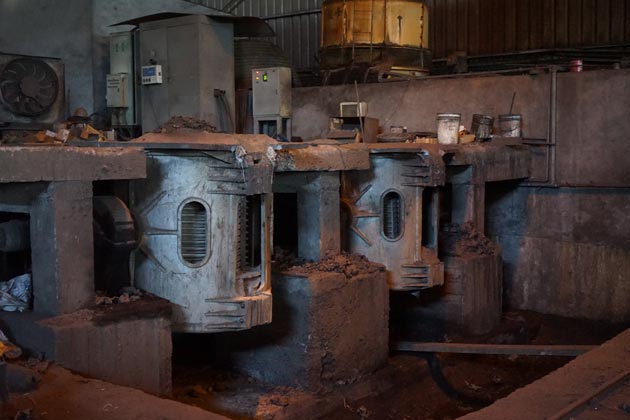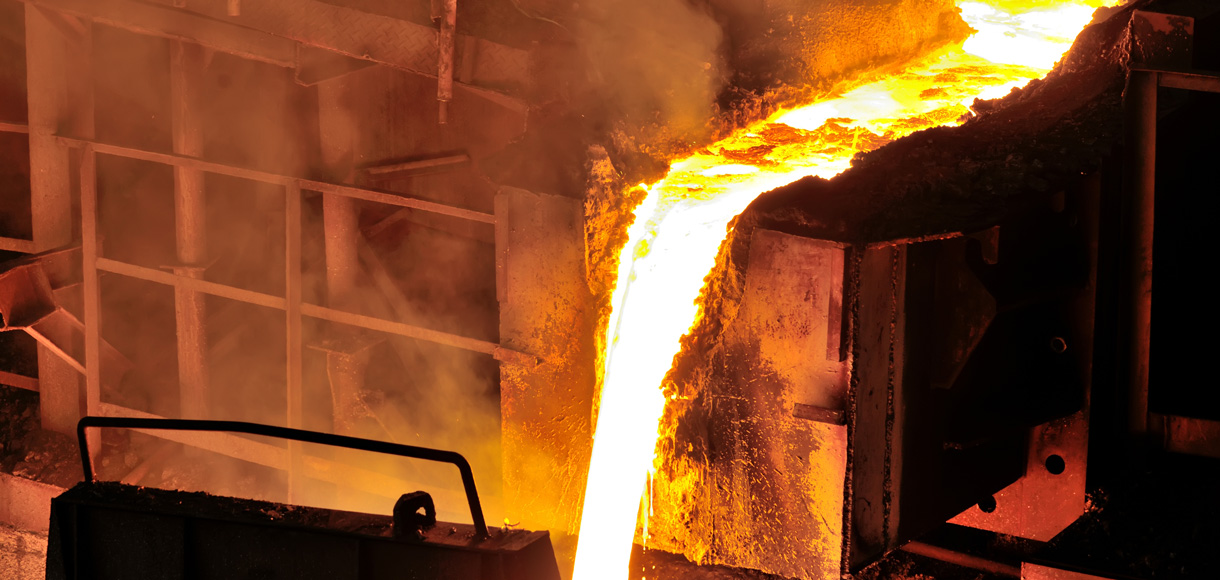Discover the Innovative Methods Used in a Metal Foundry for Superior Casting Outcomes
In today's affordable manufacturing landscape, metal foundries are increasingly adopting cutting-edge strategies to enhance spreading outcomes - Aluminum Foundry. Advanced computer system simulations enable exact modeling of molten metal behavior, while 3D printing enables quick manufacturing of complex molds. Additionally, green products and automation enhance operations. These growths guarantee significant renovations in performance and high quality control. However, the influence of these innovations on sustainability and manufacturing practices stays to be totally explored
Advanced Computer Simulations in Metal Casting
Advanced computer system simulations have reinvented the metal spreading procedure by improving precision and effectiveness. These sophisticated devices permit designers to create digital designs of actors elements, allowing them to predict the habits and assess of molten metal during the spreading stage. By simulating different specifications such as temperature, circulation price, and cooling rates, producers can determine prospective issues before physical production begins.
This proactive strategy reduces waste and reduces pricey errors, eventually leading to enhanced item quality. Furthermore, simulations promote the optimization of mold and mildew designs, ensuring that they meet the specific demands of each job. The combination of computational liquid characteristics (CFD) and limited element evaluation (FEA) more adds to the accuracy of these simulations, giving insights that were formerly unattainable. Consequently, advanced computer system simulations have become an indispensable part of contemporary metal foundries, greatly advancing the industry's capacities.
3D Printing for Molds and Patterns
3D printing has actually arised as a groundbreaking strategy for developing molds and patterns in the metal foundry industry. This technology enables the rapid production of complicated geometries that traditional manufacturing methods battle to achieve. By using additive production, foundries can produce complex layouts with decreased preparations and material waste. The capacity to produce mold and mildews as needed enables greater versatility in design iterations, facilitating faster prototyping and modifications.
3D printing can use a variety of materials, including plastics and steels, tailored to details casting demands. This flexibility enhances the accuracy of mold and mildews, resulting in premium casting end results with enhanced surface finishes. Furthermore, the reduction in the number of components required streamlines setting up procedures, further enhancing production efficiency. As foundries remain to take on 3D printing, they are poised to redefine industry standards, leading the way for advancement and improved performance in metal spreading operations.
Eco-Friendly Products and Processes
As the metal foundry market encounters boosting stress to decrease its environmental impact, the adoption of eco-friendly products and processes has actually ended up being crucial. Foundries are now checking out sustainable alternatives to standard materials, such as using recycled steels and bio-based binders. These materials not just minimize waste however additionally reduced power consumption during production.
Additionally, improvements in sand casting methods have actually brought about making use of artificial sands that are much less hazardous to the setting. Factories are additionally implementing innovative processes like molten metal treatment that reduces emissions and enhances the high quality of cast items.
Additionally, water-based coatings have actually replaced toxic solvents, promoting a more secure work setting (Aluminum Foundry). By integrating these go environmentally friendly methods, metal foundries can considerably decrease their ecological effect while keeping high-quality spreading results. This change additional reading not only profits the setting but also straightens with the growing consumer demand for lasting manufacturing options
Automation and Robotics in Foundry Workflow
While the metal foundry sector accepts advancement, the assimilation of automation and robotics is transforming operations considerably. Automated systems improve processes such as mold making, metal pouring, and casting completing, significantly boosting performance. Robotics promote the handling of hefty materials, decreasing the danger of office injuries and making sure safer atmospheres.

Better, making use of automated guided cars (AGVs) maximizes material transportation within facilities, ensuring timely delivery of elements to appropriate workstations. By executing these technologies, foundries can adapt to varying needs with greater dexterity, eventually resulting in boosted earnings and competition on the market. As automation and robotics remain to progress, they hold the potential to redefine typical foundry practices and drive additional innovations in casting strategies.
Real-Time Surveillance and Top Quality Control Techniques
The innovations in automation and robotics have actually led the way for a lot more innovative methods to quality control in metal foundries. Real-time surveillance systems utilize advanced sensors and information analytics to track crucial specifications throughout the casting procedure. These systems constantly examine variables such as stress, product, and temperature composition, enabling instant detection of inconsistencies from established requirements.
Quality control methods now include artificial intelligence formulas that analyze historical data to anticipate prospective defects before they occur. This aggressive method minimizes waste and boosts total manufacturing effectiveness. In addition, integrated comments loops permit rapid adjustments, making sure that each casting fulfills rigid quality demands.
The execution of digital doubles-- digital reproductions of physical assets-- has additionally revolutionized quality assurance, permitting see it here engineers to imitate and maximize procedures in real-time. Together, these ingenious strategies considerably enhance the integrity and top quality of spreadings, setting new industry requirements in metal foundry procedures.
Regularly Asked Concerns
What Kinds of Metals Are Generally Cast in Factories?
Frequently cast metals in foundries include light weight aluminum, brass, bronze, and iron. Each metal exhibits special residential or commercial properties, making them suitable for different applications, such as auto components, equipment, and creative sculptures, boosting their convenience in production.

For how long Does the Casting Refine Commonly Take?
The casting procedure generally takes numerous hours to days, depending on aspects such as the complexity of the mold and mildew, kind of metal used, and cooling requirements. Each phase influences the overall period significantly.
What Precaution Are in Place for Foundry Workers?

How Are Problems in Castings Identified and Addressed?
Problems in castings are identified via aesthetic examinations and non-destructive screening methods. Once spotted, foundry workers resolve them by improving procedures, changing material structures, and applying rehabilitative steps to assure high quality and compliance with requirements.
What Is the Cost Range for Metal Casting Services?
The expense range for metal spreading services usually ranges $1 to $10 per extra pound, relying on elements such as material kind, complexity of the design, and manufacturing volume, influencing total prices significantly.
In today's affordable production landscape, metal foundries are significantly embracing cutting-edge strategies to improve spreading outcomes. As the metal foundry market deals with enhancing pressure to decrease its environmental impact, the adoption of environmentally friendly materials and processes has ended up being crucial. Shops are now checking out lasting alternatives to standard products, such as using bio-based binders and recycled steels. By incorporating these environmentally friendly methods, metal foundries can considerably reduce their ecological impact while preserving high-quality casting outcomes. The advancements in automation and robotics have led the method for more advanced approaches to quality guarantee in metal foundries.